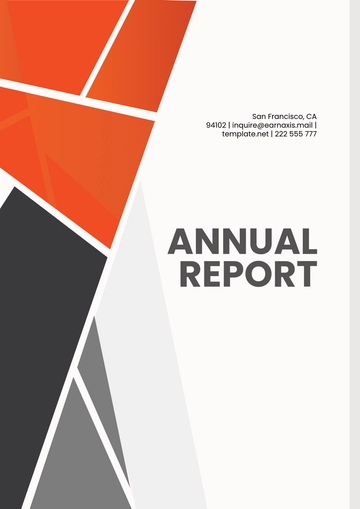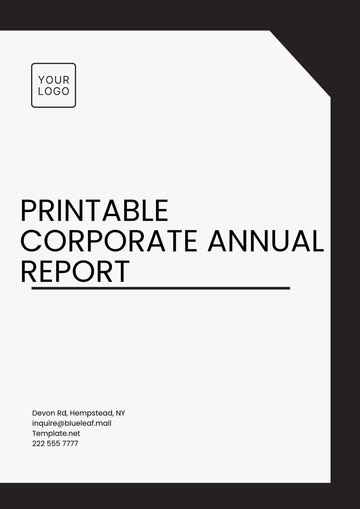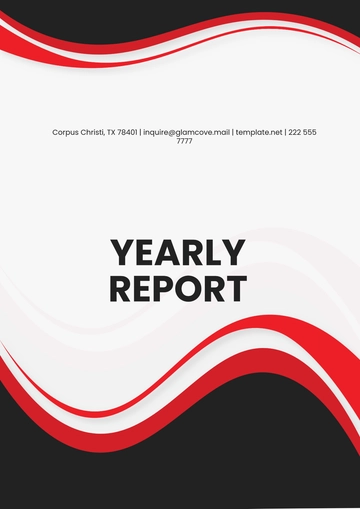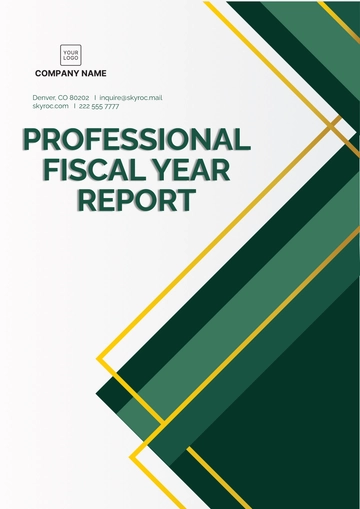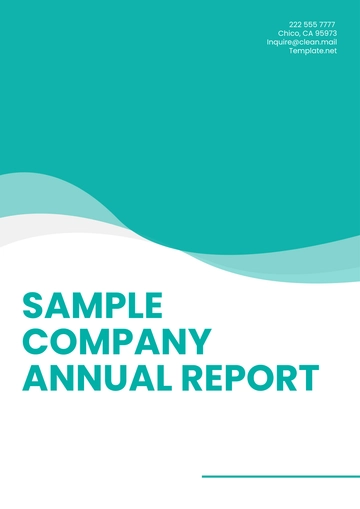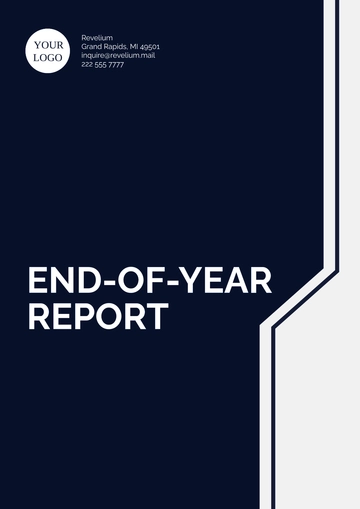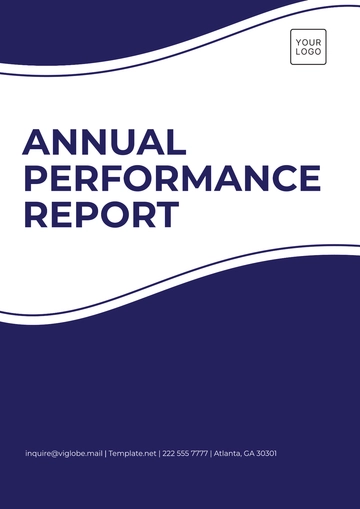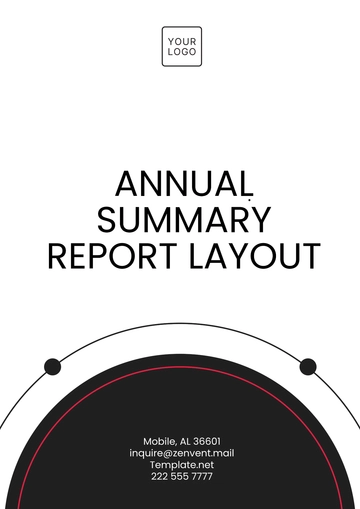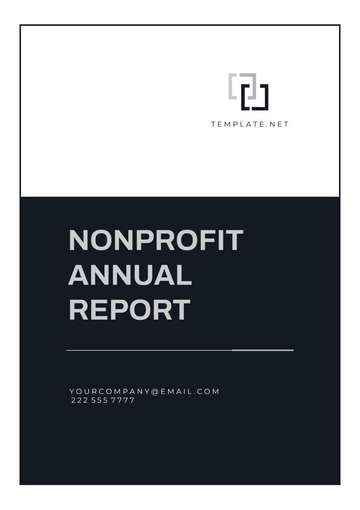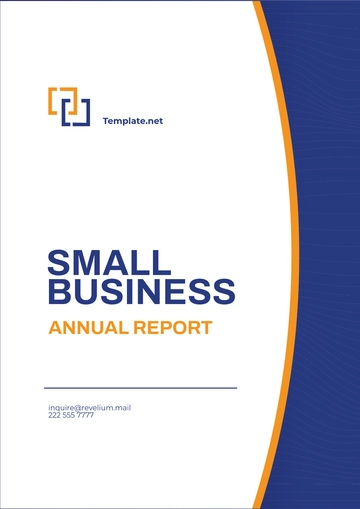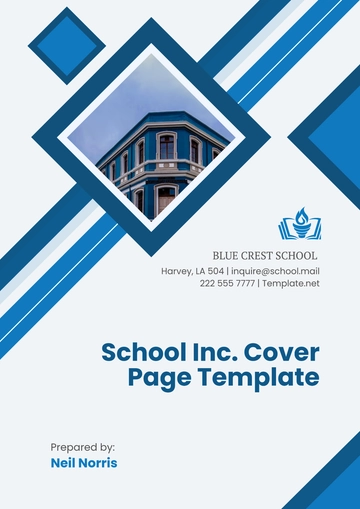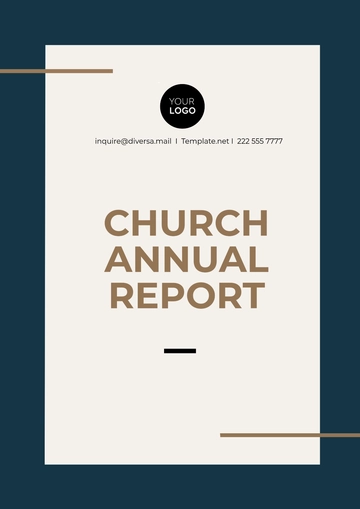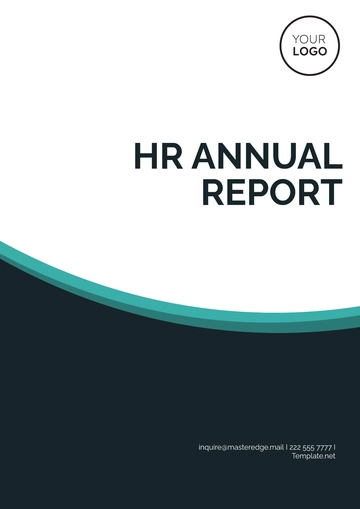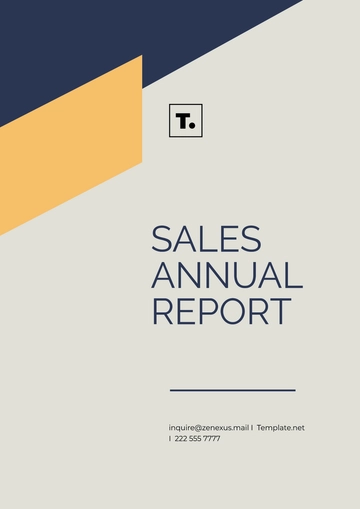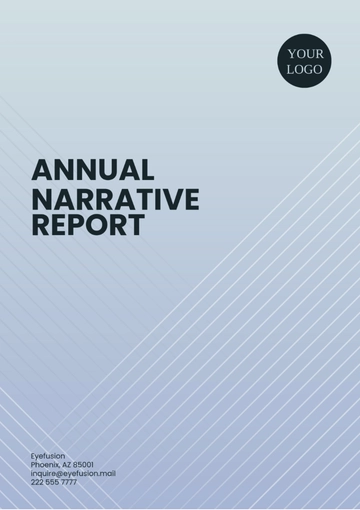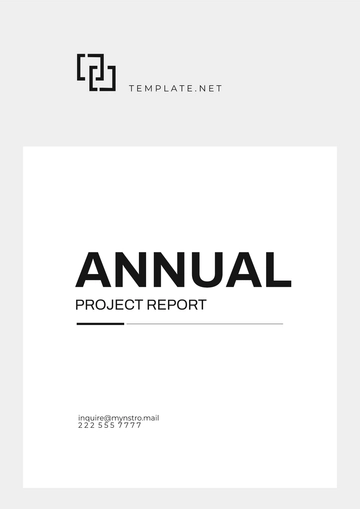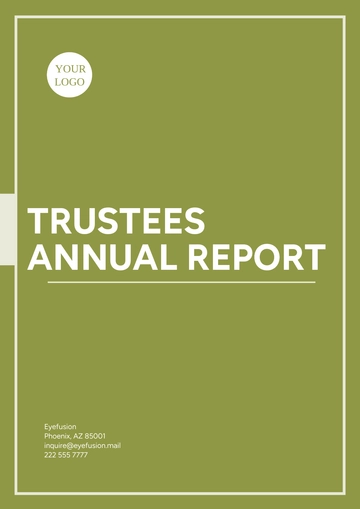Free Cleaning Services Annual Legal Compliance Report
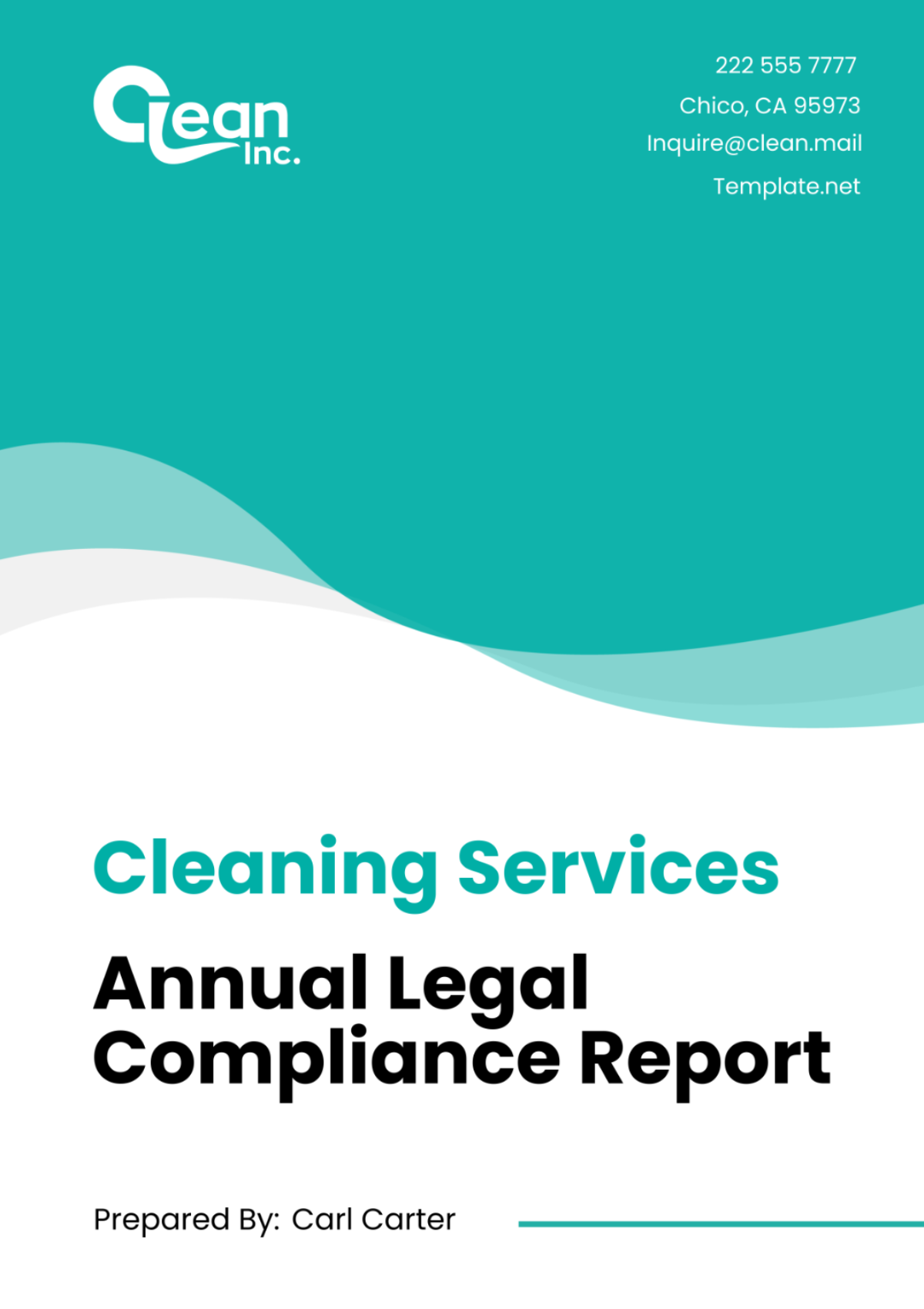
I. Introduction
A. Company Background
Our legacy spans decades, rooted in a passion for cleanliness and client satisfaction. [Your Company Name] has become synonymous with reliability and professionalism. Our mission remains unwavering: to create hygienic environments while safeguarding the health and safety of our clients and staff.
B. Purpose of the Report
This annual compliance report of year 2050 serves dual purposes:
Transparency and Accountability: We uphold transparency by openly sharing our compliance efforts. Stakeholders, including clients, investors, and regulatory bodies, rely on this report to assess our commitment to legal standards.
Risk Mitigation and Continuous Improvement: By evaluating our compliance performance, we identify areas for enhancement. Proactive measures prevent legal violations and enhance operational efficiency.
Our risk management strategies include:
2.1. Scenario Planning: Anticipating potential risks and developing mitigation plans.
2.2. Internal Audits: Regular assessments to identify vulnerabilities.
2.3. Feedback Loops: Listening to client feedback to improve our services.
II. Regulatory Framework
Our cleaning services operate within a complex legal landscape. Understanding and adhering to relevant regulations are paramount.
A. Federal Regulations
Occupational Safety and Health Administration (OSHA): OSHA guidelines remain central to workplace safety.
Our compliance initiatives include:
1.1. Regular safety training sessions covering chemical handling, ergonomics, and equipment usage.
1.2. Detailed documentation of safety protocols and incident reports.
1.3. Implementation of safety audits to assess compliance.
1.4. Collaboration with OSHA representatives during inspections.
Environmental Protection Agency (EPA): The EPA oversees environmental standards.
Our compliance efforts encompass:
2.1. Proper disposal of hazardous waste (e.g., cleaning chemicals, contaminated materials).
2.2. Monitoring emissions from cleaning equipment.
2.3. Adherence to air quality standards during indoor cleaning.
2.4. Participation in EPA programs promoting sustainability.
B. State and Local Regulations
State-Specific Cleaning Industry Regulations: Each state imposes unique requirements.
Our compliance checklist includes:
1.1. Valid licenses and certifications.
1.2. Compliance with state-specific waste disposal guidelines.
1.3. Regular communication with state agencies to stay informed about updates.
1.4. Participation in industry associations to influence state-level policies.
Codes and Ordinances: Local laws significantly impact our daily operations.
Our compliance initiatives cover:
2.1. Noise restrictions during cleaning hours.
2.2. Hygiene standards for public spaces.
2.3. Reporting requirements for incidents (e.g., spills, accidents).
2.4. Collaborations with local health departments for community well-being.
III. Compliance Assessment
The following table summarizes our compliance status for the year 2050:
Compliance Area | Status |
|---|---|
Regulatory Compliance | Fully Compliant |
Training and Certification | Fully Compliant |
Workplace Safety | Partially Compliant |
Environmental Practices | Compliant |
A. Regulatory Compliance
Our unwavering commitment to regulatory compliance ensures that we operate within legal boundaries. By adhering to federal, state, and local regulations, we protect our business from penalties, lawsuits, and reputational harm. Compliance is not merely a checkbox—it’s a fundamental aspect of our operations that builds trust with stakeholders.
B. Training and Certification
Our fully compliant training programs empower our staff. They are well-versed in safety protocols, chemical handling, and infection control. Regular training sessions equip them to perform their duties effectively while minimizing risks. A well-trained team enhances service quality and client satisfaction.
C. Workplace Safety
While we’ve made progress, there’s room for improvement. Incident reports highlight areas where safety protocols need reinforcement. Prioritizing safety culture—through ongoing training, incident reporting, and proactive measures—creates a secure work environment. Our staff’s well-being directly impacts productivity and client confidence.
D. Environmental Practices
Our commitment to environmental compliance extends beyond legal requirements. Proper waste management, responsible chemical usage, and adherence to air quality standards demonstrate our dedication. Beyond compliance, these practices contribute to community health and sustainability. As responsible stewards, we strive for a positive impact on the planet.
IV. Challenges and Remediation
A. Non-Compliance Incidents
Improper Waste Sorting: Instances of incorrect waste disposal were noted.
1.1. Remediation
1.1.1. Reinforced waste segregation training to ensure proper sorting.
1.1.2. Updated signage for clarity, emphasizing waste categories.
1.1.3. Increased monitoring of waste disposal practices through regular audits.
1.1.4. Conducted refresher training sessions for all staff members.
Lack of PPE Compliance:
Some staff members neglected personal protective equipment (PPE) usage.
2.1. Remediation
2.1.1. Intensified PPE awareness campaigns, emphasizing the importance of consistent usage.
Implemented spot checks during work shifts to ensure compliance.
2.1.2. Conducted refresher training on PPE protocols, addressing specific scenarios.
2.1.3. Introduced incentives for PPE compliance to encourage staff participation.
Inadequate Record Keeping:
Missing or incomplete employment records posed a compliance risk.
3.1. Remediation
3.1.1. Revised record-keeping procedures, ensuring accurate and comprehensive documentation.
3.1.2. Trained administrative staff on proper record maintenance.
3.1.3. Implemented regular audits of employment records to identify gaps and discrepancies.
3.1.4. Automated record-keeping processes to minimize errors.
B. Compliance Challenges Addressed
Underpayment Issues: Detected cases of underpayment to cleaning staff.
1.1. Remediation
1.1.1. Conducted salary reviews to ensure compliance with minimum wage laws.
1.1.2. Implemented transparent payroll processes, providing detailed breakdowns to staff.
1.1.3. Educated staff on their rights and entitlements regarding compensation.
1.1.4. Established a dedicated helpline for payroll-related inquiries.
Non-Compliant Personal Leave Policies: Some leave policies did not align with legal requirements.
2.1. Remediation
2.1.1. Revised leave policies to include mandatory sick leave and family leave.
2.1.2. Educated staff on their entitlements and the process for requesting leave.
2.1.3. Established clear communication channels for leave-related inquiries.
2.1.4. Conducted regular audits of leave records to ensure compliance.
Contracting Requirements: Instances of non-compliance with contractual obligations were identified.
3.1. Remediation
3.1.1. Strengthened contract management processes, ensuring adherence to terms and deadlines.
3.1.2. Monitored subcontractors’ compliance closely, conducting regular assessments.
3.1.3. Established clear communication channels with subcontractors to address compliance issues promptly.
3.1.4. Conducted joint compliance training sessions with subcontractors.
Inadequate Induction and Training: New hires lacked comprehensive onboarding, affecting compliance awareness.
4.1. Remediation
4.1.1. Developed a robust induction program covering safety, compliance, and company policies.
4.1.2. Ensured all staff received regular training updates to stay informed.
4.1.3. Monitored training effectiveness through feedback and performance evaluations.
4.1.4. Introduced mentorship programs for new hires to enhance compliance understanding.
V. Future Strategies
A. Continuous Improvement
Advanced Safety Courses: Explore specialized training:
1.1. Biohazard Cleanup: It entails equipping staff to handle hazardous materials safely.
1.2. Confined Spaces: Ensuring safe entry and exit procedures is crucial.
1.3. Emergency Response: Crisis management protocols for various scenarios.
1.4. Ergonomics and Injury Prevention: Enhancing staff well-being during cleaning tasks.
Environmental Stewardship: Collaborate with clients on green initiatives:
2.1. Promote eco-friendly cleaning products.
2.2. Opt for energy-efficient equipment.
2.3. Implement waste reduction strategies to minimize environmental impact.
2.4. Explore sustainable sourcing practices for cleaning supplies.
B. Proactive Compliance Monitoring
Conduct periodic internal audits across all compliance areas.
Evaluate adherence to policies, procedures, and regulations.
Address any emerging issues promptly to maintain compliance.
Involve cross-functional teams in audit processes for comprehensive insights.
VI. Conclusion
In closing, [Your Company Name]'s commitment to legal compliance is not merely a regulatory obligation—it is the cornerstone of our business ethics and operational excellence. Through rigorous remediation efforts, we have addressed challenges head-on, ensuring that our cleaning services operate within the bounds of the law and uphold the highest standards.
As we look ahead, our future strategies emphasize continuous improvement and proactive monitoring. By investing in advanced safety training, environmental stewardship, and robust compliance practices, we position ourselves for sustained success. Our staff’s dedication and our clients’ trust drive us forward, reinforcing our mission to create hygienic environments while safeguarding the well-being of all stakeholders.
Thank you for your continued support, and we remain committed to delivering exceptional service while maintaining unwavering compliance.
- 100% Customizable, free editor
- Access 1 Million+ Templates, photo’s & graphics
- Download or share as a template
- Click and replace photos, graphics, text, backgrounds
- Resize, crop, AI write & more
- Access advanced editor
Showcase your cleaning services compliance status with ease with the Cleaning Services Annual Legal Compliance Report Template! This customizable report from Template.net is editable, allowing you to conduct a detailed legal compliance report. The AI Editor Tool simplifies the editing process, helping you make informed decisions about your cleaning services!
You may also like
- Sales Report
- Daily Report
- Project Report
- Business Report
- Weekly Report
- Incident Report
- Annual Report
- Report Layout
- Report Design
- Progress Report
- Marketing Report
- Company Report
- Monthly Report
- Audit Report
- Status Report
- School Report
- Reports Hr
- Management Report
- Project Status Report
- Handover Report
- Health And Safety Report
- Restaurant Report
- Construction Report
- Research Report
- Evaluation Report
- Investigation Report
- Employee Report
- Advertising Report
- Weekly Status Report
- Project Management Report
- Finance Report
- Service Report
- Technical Report
- Meeting Report
- Quarterly Report
- Inspection Report
- Medical Report
- Test Report
- Summary Report
- Inventory Report
- Valuation Report
- Operations Report
- Payroll Report
- Training Report
- Job Report
- Case Report
- Performance Report
- Board Report
- Internal Audit Report
- Student Report
- Monthly Management Report
- Small Business Report
- Accident Report
- Call Center Report
- Activity Report
- IT and Software Report
- Internship Report
- Visit Report
- Product Report
- Book Report
- Property Report
- Recruitment Report
- University Report
- Event Report
- SEO Report
- Conference Report
- Narrative Report
- Nursing Home Report
- Preschool Report
- Call Report
- Customer Report
- Employee Incident Report
- Accomplishment Report
- Social Media Report
- Work From Home Report
- Security Report
- Damage Report
- Quality Report
- Internal Report
- Nurse Report
- Real Estate Report
- Hotel Report
- Equipment Report
- Credit Report
- Field Report
- Non Profit Report
- Maintenance Report
- News Report
- Survey Report
- Executive Report
- Law Firm Report
- Advertising Agency Report
- Interior Design Report
- Travel Agency Report
- Stock Report
- Salon Report
- Bug Report
- Workplace Report
- Action Report
- Investor Report
- Cleaning Services Report
- Consulting Report
- Freelancer Report
- Site Visit Report
- Trip Report
- Classroom Observation Report
- Vehicle Report
- Final Report
- Software Report
